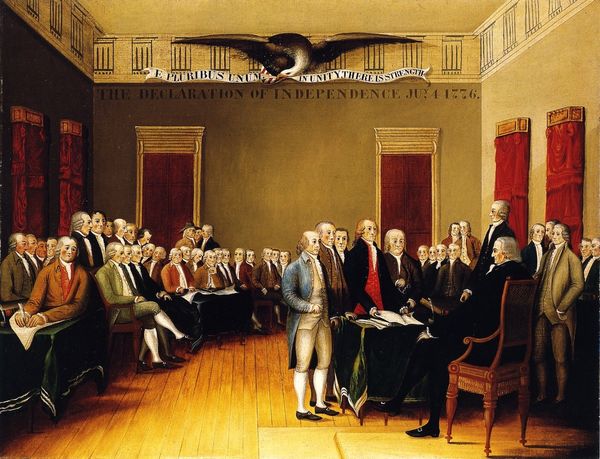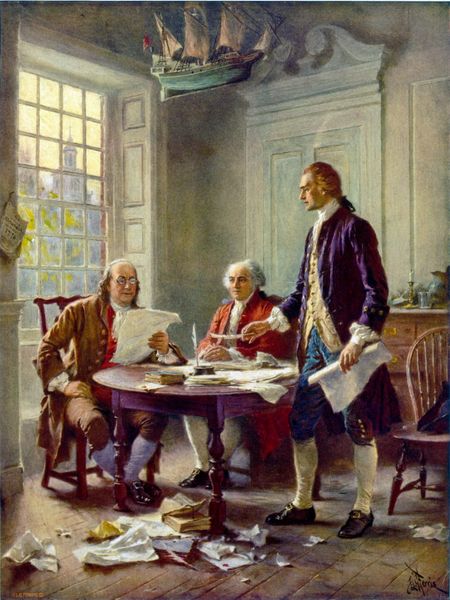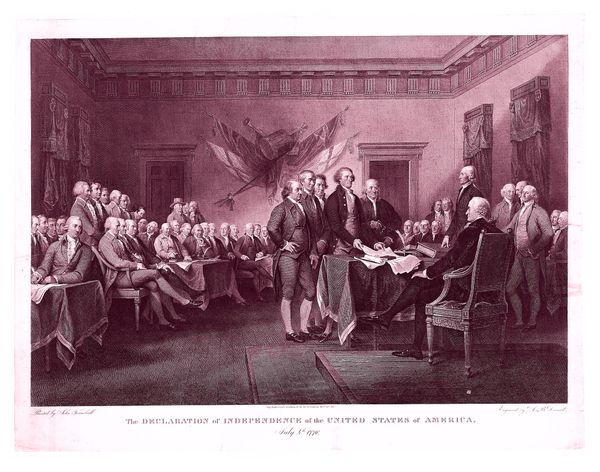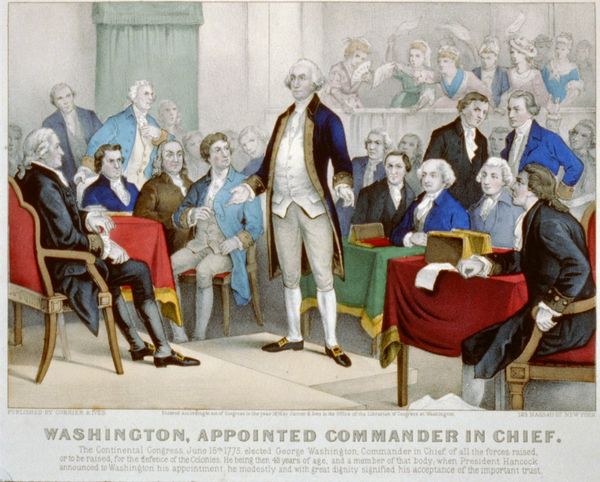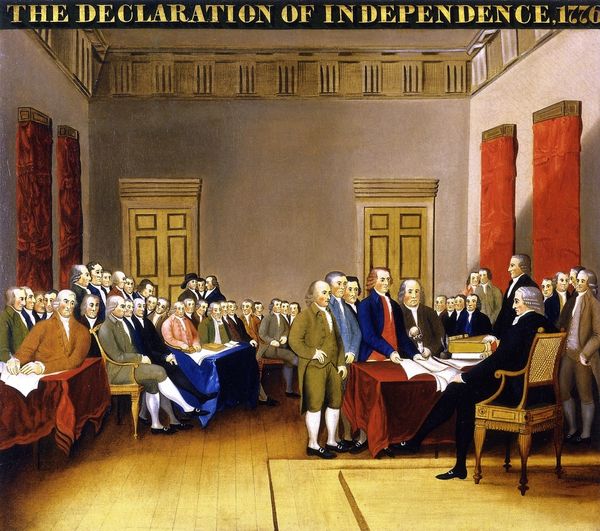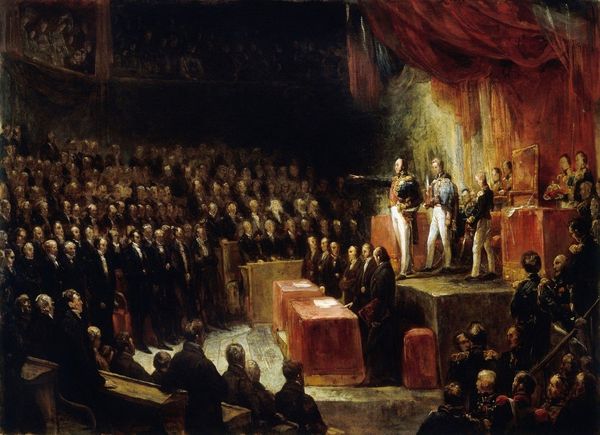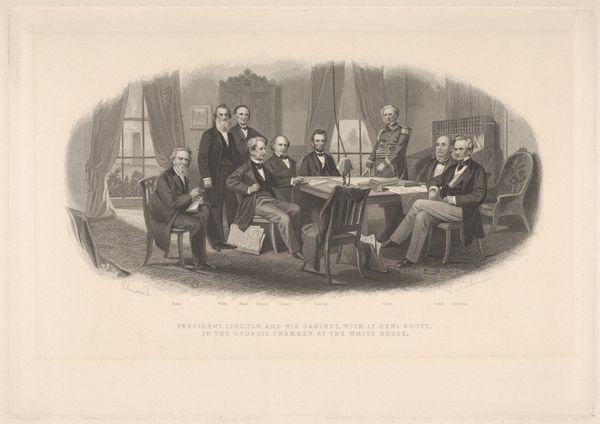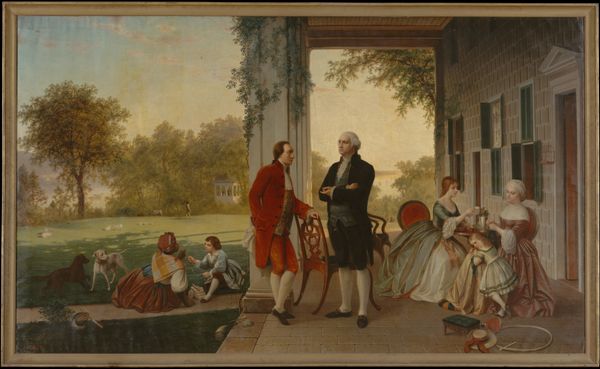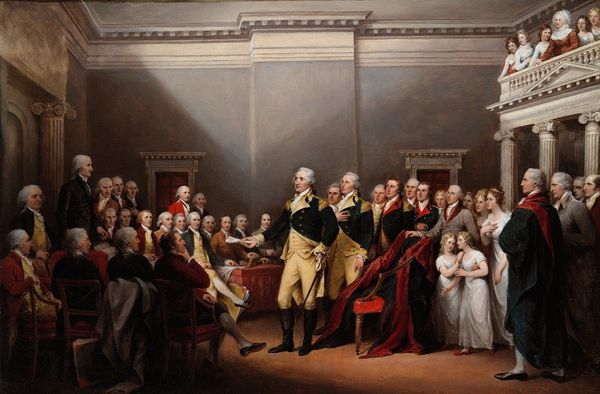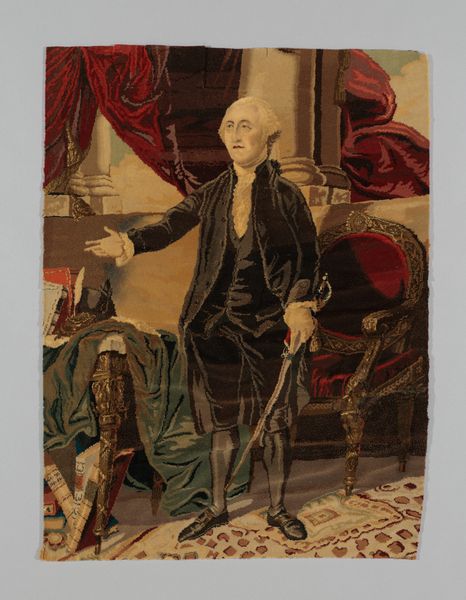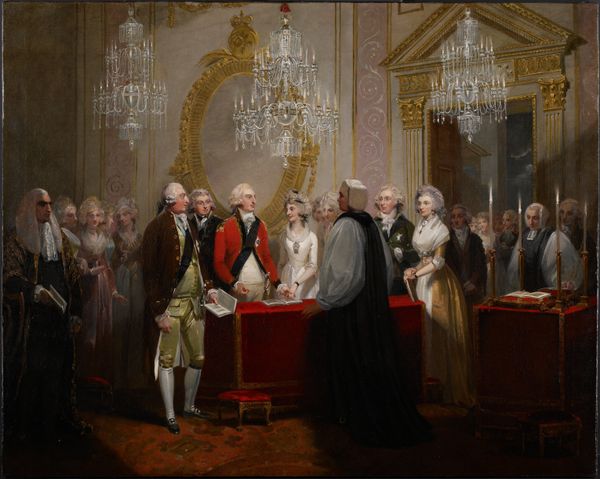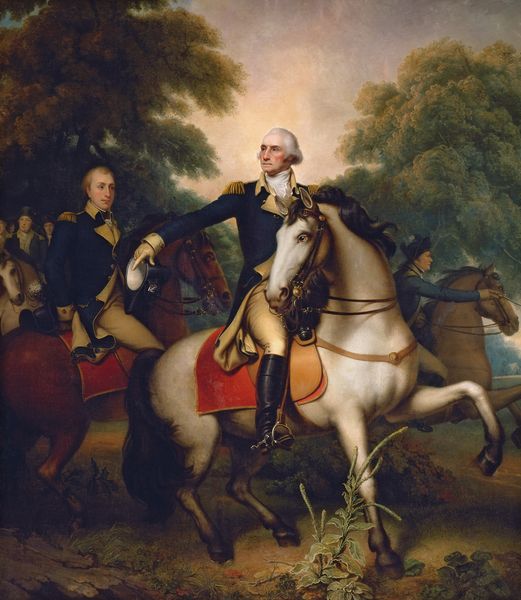
#
portrait
#
narrative-art
# print
#
historic architecture
#
group-portraits
#
19th century
#
genre-painting
#
history-painting
#
academic-art
#
historical building
Copyright: Public domain
Curator: This is Asher Brown Durand’s “Declaration of Independence,” a print created in 1823. It depicts a pivotal moment in American history. Editor: My first thought? Lots of white men. And, wow, look at that room. It’s kind of… vanilla. Makes you wonder what the atmosphere was really like, right? Curator: Indeed. Durand's work functions as a historical record but also serves as a reflection of the values of the time, primarily highlighting the contributions of white, male landowners while marginalizing the roles and experiences of women, enslaved people, and indigenous populations whose lives were inextricably linked to this historical moment. The painting also shows its roots in Academic art. Editor: Yeah, you can practically smell the mahogany and hear the quill scratching. I wonder what they were thinking? I mean, signing your name on a document that basically says, "We're out!" Takes guts. Curator: It certainly does, and it's crucial to examine the social context of such declarations. For many groups, the ideals of "life, liberty, and the pursuit of happiness" were not universally applied, leading to a deeply contradictory reality. Even Durand’s technique has political implication as the history-painting aspect can be read through various frameworks of class and race relations in 19th century United States. Editor: I can't help but wonder about all the perspectives missing in this representation. What would the room feel like seen by a woman? Or a Black person? Curator: Precisely! The visual narrative focuses on the signatories while obscuring the diverse realities that shaped and challenged the formation of the nation. Editor: It’s a beautiful, flawed artifact. Makes you think, doesn’t it? About history, and who gets to tell it, and how much we’re still figuring out the "We the People" part. Curator: Absolutely. Engaging with artworks like Durand’s “Declaration of Independence” demands a willingness to critique and re-evaluate inherited narratives. Doing so provides more comprehensive understanding of history and identity.
Comments
No comments
Be the first to comment and join the conversation on the ultimate creative platform.

